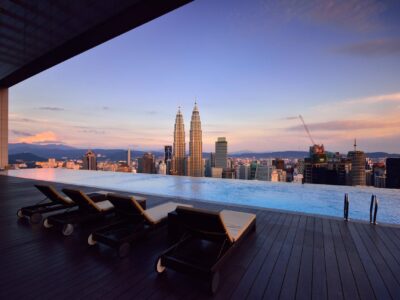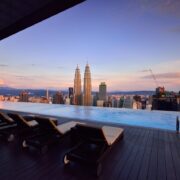Palawan Unveiled: Ultimate Philippines Guide
Palawan, often referred to as the “Last Frontier” of the Philippines, is a tropical paradise that boasts pristine beaches, crystal-clear waters, and breathtaking landscapes. This elongated island province stretches from Mindoro to Borneo, offering a diverse range of attractions for every type of traveler. Whether you’re a beach bum, an adventure seeker, or a nature lover, Palawan has something special for you. In this comprehensive guide, we’ll explore the best of Palawan, from its hidden lagoons to its vibrant marine life.
Palawan, a name that resonates with visions of untouched beaches, emerald waters, and sunsets that paint the sky, is the Philippines’ most enchanting island province. Often dubbed the “Last Frontier,” Palawan stretches southwest from Mindoro to Borneo in a slender, elongated formation. Its topography is a mesmerizing blend of limestone cliffs, dense forests, and a coastline that seems to stretch endlessly.
But Palawan is more than just a visual treat. It’s a symphony of biodiversity, with its Tubbataha Reefs Natural Park being a UNESCO World Heritage site, home to a vibrant marine life that includes whale sharks, sea turtles, and manta rays. The island’s interior is equally captivating, with the Puerto Princesa Subterranean River.
The cultural tapestry of Palawan is as diverse as its landscapes. Influences from indigenous tribes, neigh boring Asian countries, and Spanish colonisation have melded together, creating a unique Palaweño identity. This rich heritage is evident in the island’s festivals, culinary delights, and daily life.
Travelers to Palawan often find themselves torn between the allure of its natural wonders and the warmth of its people. The local communities, with their sustainable practices and deep respect for nature, are the true stewards of this paradise. Their efforts in conservation and eco-tourism ensure that Palawan remains pristine for future generations.
Puerto Princesa: The City in a Forest
Subterranean River National Park: This underground river is one of the longest navigable rivers in the world. Tourists can explore its limestone caves and marvel at its stunning stalactites and stalagmites formations.
Honda Bay: Perfect for island hopping, Honda Bay offers a plethora of small islands with powdery white sands and azure waters, ideal for snorkeling and diving.
El Nido: A Slice of Heaven on Earth
Big and Small Lagoon: Kayak through these serene lagoons, surrounded by towering limestone cliffs, and immerse yourself in the tranquility of nature.
Nacpan Beach: Often ranked among the best beaches in the world, Nacpan offers a 4km stretch of golden sand, perfect for sunbathing and beachcombing.
Twin Beaches: Marvel at the unique sight of two beaches, Nacpan and Calitang, converging in a single sandbar.
Coron: The Wreck Diving Capital
Sunken Japanese Warships: Dive into history by exploring the sunken remnants of Japanese warships from World War II.
Kayangan Lake: Dubbed the cleanest lake in Asia, its crystal-clear waters offer a surreal swimming experience.
Mt. Tapyas: Hike up for a panoramic view of Coron town and its surrounding islands.
Balabac: The Hidden Gem
Onuk Island: A remote paradise, Onuk Island is known for its shallow turquoise waters and vibrant coral reefs.
Candaraman Island: Famous for its starry sandbar, this island offers a unique night time spectacle when bioluminescent plankton light up the shores.
Culinary Delights of Palawan
Tamilok: A woodworm delicacy, Tamilok is a must-try for the adventurous foodie.
Chao Long Noodles: Introduced by Vietnamese refugees, this noodle dish has become a local favorite.
Sustainable Tourism in Palawan
Palawan’s natural beauty is its greatest asset, and preserving it is of utmost importance. Always practice sustainable tourism by minimising waste, respecting local cultures, and supporting local businesses.
Tips for Traveling in Palawan
Best Time to Visit: The dry season, from November to May, is ideal for beach activities and island hopping.
Local Transportation: Tricycles and jeepneys are the primary modes of transportation. For island hopping, rent a boat or join a group tour.
Currency: While major establishments accept credit cards, it’s advisable to carry Philippine Pesos for local transactions.
As we near the end of our tour across Palawan, it’s clear that this island is more than simply a location; it’s a feeling, a connection to nature in its purest form. Its pristine beaches, verdant woods, and abundant marine life are not only attractions, but also testaments to the grandeur of the Earth. The Palaweo people’s kindness and persistence provide a human touch to this natural beauty, reminding us of the peaceful cohabitation possible between man and nature.
In today’s quickly changing world, their commitment to sustainability and preservation is a light of hope. Carry not only images and mementos with you when you leave Palawan, but also memories of a place where time appears to stand still and nature and culture dance in perfect harmony. Allow Palawan to serve as a reminder that there are still places of pure, pristine beauty in this huge planet begging to be appreciated and conserved.
Conclusion
Palawan is a testament to the Philippines’ natural beauty, offering a blend of pristine beaches, rich history, and vibrant culture. Whether you’re diving into the deep blue seas, exploring hidden caves, or simply soaking up the sun, Palawan promises an unforgettable experience. So pack your bags, and embark on a journey to this tropical paradise!













